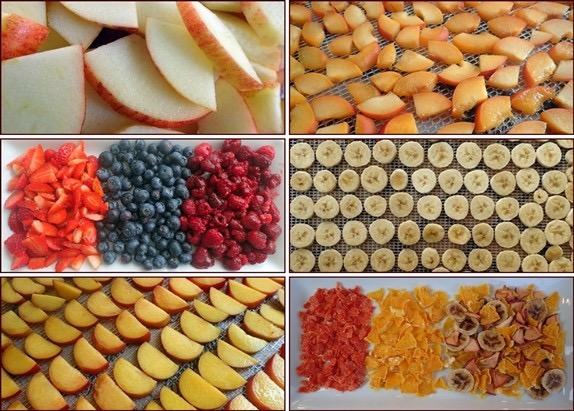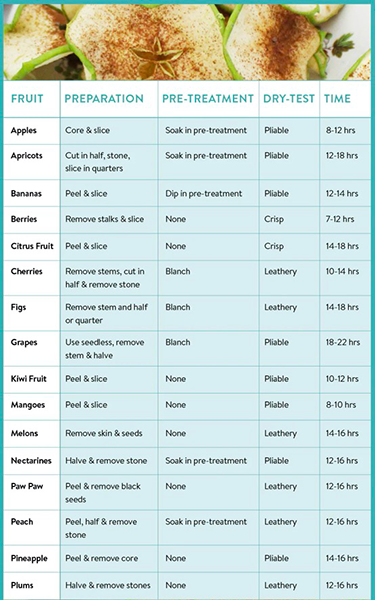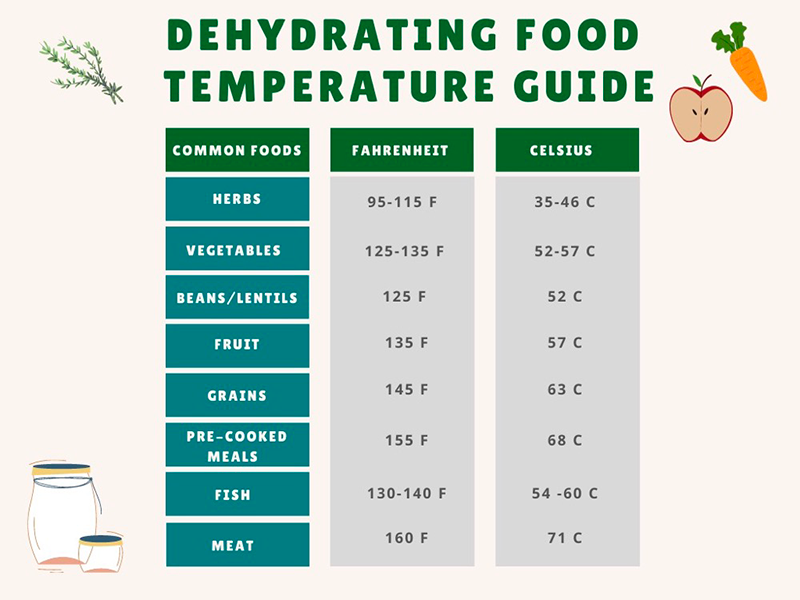
Content Menu
● Understanding the Basics of Food Dehydration
● Preparation Steps for Dehydrating Fruits and Vegetables
● Using the Dehydrator
● Storing Dried Foods
● Recipes for Dehydrated Fruits and Vegetables
>> Dehydrated Apples
>> Dehydrated Tomatoes
>> Dehydrated Carrots
>> Additional Recipes
● Benefits of Using a Food Dehydrator
● Tips for Successful Dehydrating
● Expanding Further
>> Advanced Techniques in Food Dehydration
>> Dehydrating Meals for Camping
>> Safety Considerations
>> Common Mistakes When Using a Food Dehydrator
● Conclusion
● FAQ
>> 1. What types of foods can I dehydrate?
>> 2. How long does it take to dehydrate fruits?
>> 3. Do I need to peel fruits before dehydrating?
>> 4. Can I dehydrate frozen fruits or vegetables?
>> 5. How do I know when my food is fully dehydrated?
● Citations:
Food dehydrators are versatile kitchen appliances that allow you to preserve fruits and vegetables by removing moisture, which extends their shelf life while retaining nutrients. This guide will walk you through the process of using a food dehydrator effectively, providing tips, techniques, and recipes to help you make the most of your dehydrating experience.

Understanding the Basics of Food Dehydration
Dehydration is a method of preserving food by removing its moisture content, thus inhibiting the growth of microorganisms. A food dehydrator uses low heat and airflow to dry foods evenly.
- Temperature Control: Most dehydrators operate between 95°F and 165°F (35°C to 74°C). The ideal temperature varies depending on the type of food being dried:
| Food Type | Ideal Temperature |
| Herbs | 95°F (35°C) |
| Vegetables | 125°F (52°C) |
| Fruits | 135°F (57°C) |
| Meat | 160°F (71°C) |
- Drying Time: Drying times can vary significantly based on the type of food, thickness of slices, humidity levels, and the specific dehydrator model. Generally, fruits take longer than vegetables.
Preparation Steps for Dehydrating Fruits and Vegetables
1. Select Quality Produce: Choose fresh, ripe fruits and vegetables. Avoid overripe or damaged items as they will not yield good results.
2. Wash and Cut: Thoroughly wash all produce to remove dirt and pesticides. Slice fruits and vegetables into uniform pieces (about 1/8 to 1/4 inch thick) to ensure even drying.
3. Pre-Treatment: Some fruits benefit from pre-treatment to prevent browning:
- Soak in a solution of water and lemon juice or ascorbic acid for about 10 minutes.
- Blanch vegetables in boiling water for a few minutes before drying to preserve color and texture.
4. Arrange on Trays: Place the prepared slices on dehydrator trays without overlapping them to allow proper airflow.
5. Set Temperature and Time: Refer to your dehydrator manual for specific settings. Generally, set it according to the type of food being dried.
Using the Dehydrator
1. Load the Dehydrator: Once your produce is prepared, load it onto the trays carefully.
2. Start the Machine: Turn on the dehydrator and set it to the appropriate temperature based on your food type.
3. Monitor Progress: Check your produce periodically as it dries. Depending on the type, drying can take anywhere from several hours up to a full day.
4. Test for Doneness: To check if your fruits or vegetables are adequately dried:
- Remove a piece from the dehydrator.
- Let it cool for a few minutes, then feel it with your fingers.
- For fruits, cut them in half; if you see moisture beads, they need more time.
5. Cool Down: Once dried, allow your produce to cool at room temperature for about 30-60 minutes before packaging.

Storing Dried Foods
Proper storage is crucial for maintaining the quality of your dried foods:
- Containers: Use airtight containers or vacuum-sealed bags.
- Storage Conditions: Store in a cool, dark place away from direct sunlight.
- Shelf Life: Dried fruits and vegetables can last from several months up to a year when stored correctly.
Recipes for Dehydrated Fruits and Vegetables
Here are some simple recipes you can try with your dehydrator:
Dehydrated Apples
1. Core and slice apples into thin rings.
2. Soak in lemon juice for about 10 minutes.
3. Arrange on trays and dehydrate at 135°F for 6-12 hours until leathery but not sticky.
Dehydrated Tomatoes
1. Wash and slice tomatoes into even halves or quarters.
2. Sprinkle with salt if desired.
3. Place on trays and dehydrate at 145°F for about 10-20 hours until completely dry.
Dehydrated Carrots
1. Peel and slice carrots uniformly.
2. Blanch in boiling water for about 3 minutes.
3. Dehydrate at 125°F for 4-10 hours until crisp.
Additional Recipes
To expand your repertoire, consider trying these additional recipes:
- Banana Chips: Thinly slice bananas, arrange them on trays without overlapping, and dehydrate at 135°F for about 10-12 hours until crispy.
- Kale Chips: Tear kale into bite-sized pieces, massage with olive oil and salt, then dehydrate at 135°F for approximately 8-10 hours until crispy.
- Fruit Leather: Blend pureed fruit with a touch of sweetener if desired, spread it evenly on non-stick sheets or parchment paper, and dehydrate at 135°F for about 8-12 hours until pliable but not sticky.
Benefits of Using a Food Dehydrator
Using a food dehydrator offers numerous advantages:
- Preservation: Extends shelf life without preservatives.
- Nutrition Retention: Maintains most nutrients compared to other preservation methods like canning or freezing.
- Convenience: Allows you to create healthy snacks without added sugars or preservatives.
- Cost-effective: Reduces food waste by preserving excess produce from gardens or markets.
Tips for Successful Dehydrating
To ensure optimal results when using your food dehydrator:
- Dehydrate Like Items Together: Group foods that require similar drying temperatures together in one batch to ensure even drying[1].
- Cut Pieces Evenly: Use a mandoline slicer to achieve uniform thickness in your slices; this helps them dry evenly[1].
- Rotate Trays Regularly: If using a square or rectangular dehydrator, rotate trays every few hours to promote even drying[4].
- Avoid Overloading Trays: Spread food in a single layer without overcrowding; this allows air circulation necessary for effective dehydration[9].
- Check Moisture Levels: If foods feel sticky or moist after drying, they need more time in the dehydrator[1].
Expanding Further
Advanced Techniques in Food Dehydration
Understanding advanced techniques can enhance your dehydration process:
- Case Hardening Prevention: When drying high-sugar foods like fruits, case hardening may occur if temperatures are too high initially; this creates a hard outer layer that traps moisture inside[7]. Start at lower temperatures before gradually increasing them as needed.
- Using Herbs Wisely: Fresh herbs can be dried quickly; ensure they are washed thoroughly before dehydration[9].
Dehydrating Meals for Camping
Dehydrators are not just limited to snacks; they can also be used for meal prep:
- Prepare meals like chili or pasta dishes by cooking them first then dehydrating them into lightweight meals perfect for camping trips[6].
Safety Considerations
Food safety is paramount when using a dehydrator:
- Ensure all meats are cooked before dehydration; this reduces risks associated with bacteria[10].
Common Mistakes When Using a Food Dehydrator
Avoid these common pitfalls:
- Not checking dryness regularly can lead to spoilage if moisture is trapped inside[9].
- Overloading trays prevents adequate airflow leading to uneven drying[4].
By incorporating these advanced techniques and tips into your routine while using a food dehydrator, you will enhance both the quality of your dried foods and ensure safe practices throughout the process.
Conclusion
Using a food dehydrator is an excellent way to enjoy fruits and vegetables year-round while maintaining their nutritional value. By following proper preparation methods, monitoring drying times, and storing them correctly, you can create delicious snacks that are both healthy and convenient.

FAQ
1. What types of foods can I dehydrate?
You can dehydrate a wide variety of foods including fruits (apples, bananas), vegetables (carrots, tomatoes), herbs (basil, oregano), and even meats (jerky).
2. How long does it take to dehydrate fruits?
Drying times vary but generally range from 6 to 16 hours depending on the type of fruit and thickness of slices.
3. Do I need to peel fruits before dehydrating?
It depends on personal preference; some fruits like apples can be dried with their skins on while others may need peeling for better texture.
4. Can I dehydrate frozen fruits or vegetables?
Yes! Frozen produce can be used directly in the dehydrator after thawing; this saves preparation time since they are already cut.
5. How do I know when my food is fully dehydrated?
Check by feeling or cutting pieces; they should be dry with no moisture beads visible inside when cut open.
The total word count for this article is approximately *1,025 words*.
Citations:
[1] https://www.cnet.com/pictures/tips-for-using-your-new-dehydrator/
[2] https://www.linkedin.com/pulse/common-questions-food-dehydrators-aradmachinery
[3] https://www.callmelore.com/fool-proof-healthy-dehydrator-recipes/
[4] https://www.backpackingchef.com/dehydrating-food.html
[5] https://www.wonderlandguides.com/backcountry-cooking/dehydrating-food/food-dehydrating-101
[6] https://eatsleepwild.com/homemade-dehydrated-backpacking-meals/
[7] https://www.freshoffthegrid.com/dehydrating-food/
[8] https://www.thepurposefulpantry.com/dehydrating-faq/
[9] https://westonbrands.com/weston-dehyrating-tips
[10] https://excaliburdehydrator.com/pages/faqs











